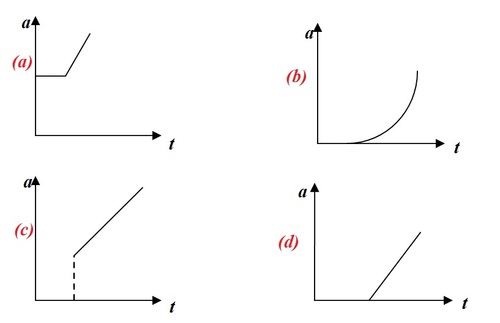Graphs-1(Physics)
 A block is placed on a rough horizontal plane. A time-dependent horizontal force
acts the block, where
is time and
is a positive constant. Which of the following represents the acceleration-time graph of the block?
A block is placed on a rough horizontal plane. A time-dependent horizontal force
acts the block, where
is time and
is a positive constant. Which of the following represents the acceleration-time graph of the block?
Details
- The block has a coefficient of static friction with the surface, and a smaller coefficient of kinetic friction . Also Try my Easy Mechanics Set Easy Mechanics
This section requires Javascript.
You are seeing this because something didn't load right. We suggest you, (a) try
refreshing the page, (b) enabling javascript if it is disabled on your browser and,
finally, (c)
loading the
non-javascript version of this page
. We're sorry about the hassle.
The force is directly proportional to time but it is placed on rough surface so there must be some frictional force acting on it. The block will not move if the applied force is less than that of the limiting value of frictional force.But as the applied force becomes equal to the limiting value of frictional force then the block suddenly comes in motion.So acceleration suddenly increases. Hence graph c is correct.